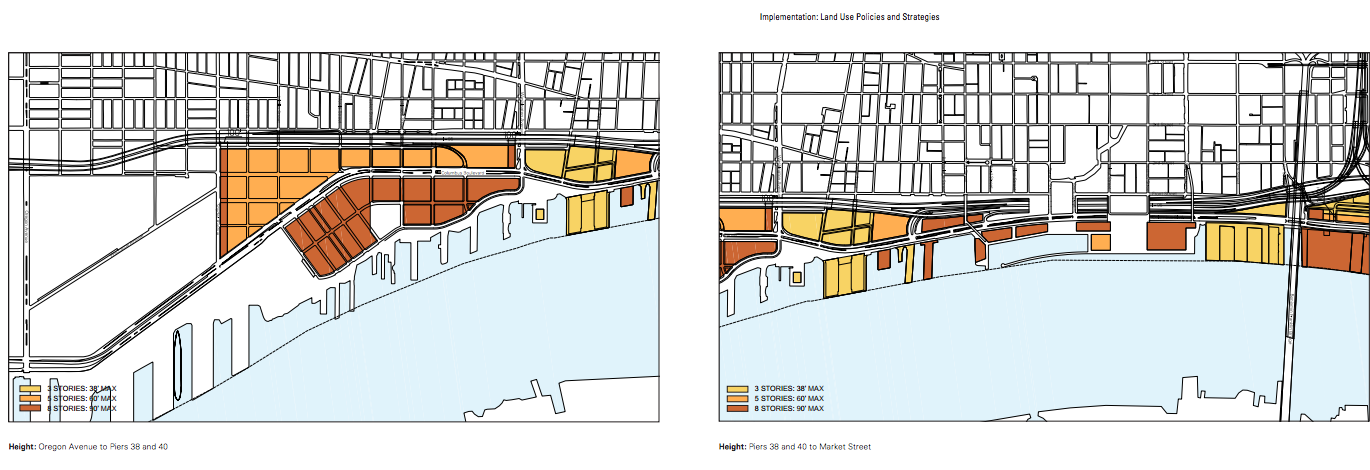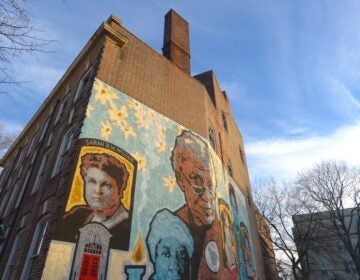Central Delaware overlay nears introduction

Zoning legislation that would create rules for development along the Central Delaware waterfront could be introduced later this month.
“That’s the goal,” Central Delaware Advocacy Group Vice Chairman Joe Schiavo said after Thursday night’s monthly CDAG meeting. The first council meeting of the year is set for January 24, and Schiavo said his understanding was that is the target.
First District Councilman Mark Squilla, who would introduce the legislation, said Friday afternoon that isn’t quite that optimistic, but indicated introduction isn’t far off.
Squilla has held several meetings with representatives from CDAG, which advocates for the principles of the Central Delaware Master Plan; the Development Workshop, which advocates for development; the city planning commission and the Delaware River Waterfront Corporation, which oversaw the development of the master plan.
“I do not think (the legislation) will be ready for the first session,” he said via email. “We may need one more meeting.” There is one more council meeting in January before the end of the month.
Schiavo, who led the CDAG meeting in Chairman Matt Ruben’s absence, said the latest draft of the legislation is still under review by the city’s legal department. “We were told it would be released before the next city council meeting. So, in the next week or so” CDAG representatives and others will see the changes, he said.
One of the key components of the overlay will be a height limit. Buildings are to be less than 100 feet tall, but developers will be able to earn extra height in exchange for providing certain public benefits, such as building a section of the Central Delaware Trail.
Under the draft overlay, the planning commission could decide to grant extra height based on its own discretion. Schiavo said that all the parties involved agreed that having a set bonus structure that takes subjectivity out of it makes the process more concrete for all involved – developers, planners and community.
CDAG member Richard Wolk, who represents Queen Village, asked if the Development Workshop was OK with the last draft of the bonus chart. Schiavo said that they had some concerns that the enticements it provided were not sweet enough, and that everyone around the table agreed it was important to encourage waterfront development. Schiavo anticipated some related changes would be part of the new draft.
Schiavo also reported that an issue both CDAG and the Workshop have been bugging the city to fix for years has been fixed. Property owners will not be liable if anyone using the riverfront trail – current or future – is hurt on land they own. The Delaware River Waterfront Corporation will indemnify them.
CDAG members also got updates on several waterfront projects, and spent the most time discussing the large, multi-component entertainment complex developer Michael Samschick plans to build around Canal Street, on and near the corner of Delaware and Frankford avenues.
For this topic, Schiavo asked CDAG’s Fishtown representative, Matt Karp, to do most of the talking. Karp said that Fishtown residents are very supportive of Samschick’s overall proposal, which includes two restaurants, a country western bar, a bowling alley and a large music venue. The community is especially happy that Samschick is reusing the Ajax Metal building and the less fancy dry ice building, rather than tearing them down. The community was less enthused about Samschick’s parking lot proposals, and had concerns that concert-goers would leave the area through the neighborhood. But Karp said most of these concerns either have been addressed or are in the process of being addressed.
CDAG may take a position different from one of the civic organizations that are represented on the board, but does not often do so. Schiavo asked if there are any major concerns remaining, and Karp said there wasn’t anything he would define as major, but there is some concern about the three billboards that would be on top the large music venue. One already exists, two, both digital, would be added.
Karp said the billboards would be accessory-use only – meaning they would only advertise businesses on the property. And he said there was discussion of building them so that they focus on I-95 and are not visible from ground level. Still, he said, digital billboards are “very different from what we’re used to in the area” and by their nature are more visible than standard, flat billboards.
CDAG is hoping Samschick will speak about the project at next month’s meeting. The project’s plan of development was already approved by the planning commission, but Schiavo said CDAG will have a chance to give input to the Zoning Board of Adjustment, since the project will require some variances.
CDAG members also voted to apply to the planning commission for Registered Community Organization status as an issue-based organization. RCOs are notified when significant development is proposed in their area. Civic organizations are geographically based, so notification is triggered when a development is proposed within those boundaries. Issue-based organizations are notified based on topic.
WHYY is your source for fact-based, in-depth journalism and information. As a nonprofit organization, we rely on financial support from readers like you. Please give today.






